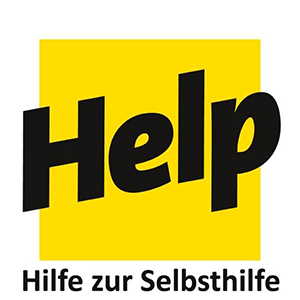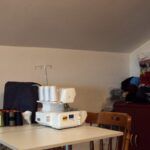:: PROJECT
Mon – 30 Construction of 24 housing units for 24 IDP Roma families
:: DONOR
German Foreign Ministry
:: REALISATION / BUDGET
07.05.2004 – 06.02.2005 :: € 486.901
:: SHORT DESCRIPTION
After the disintegration of former Yugoslavia, Montenegro has become a haven for refugees and displaced persons. Sometimes, the number of refugees has was reaching 20% of the total population. It was a great burden for the smallest and poorest republic of the former Yugoslavia which could not have been carried by its own resources. At this moment there are 14.418 refugees from Bosnia and Herzegowina and Croatia, as well as 18.000 displaced persons from Kosovo, still living in Montenegro.
According to this, 32.418 refugees and displaced persons are living in Montenegro today; that is around 5% from the total population. Return to Kosovo is still not possible for most of the displaced persons, due to the critical situation in the region.
Most of the displaced persons came to Montenegro from June to August 1999, right after the Yugoslav army has left Kosovo. Displaced persons have evenly fled to all parts of Montenegro, to the north, the south and the center of the country. According to the data from Montenegrin Commissariat for displaced persons, out of 30.000 displaced persons from Kosovo, 5.840 were Roma. Most of the displaced Roma (67%) are located in the central part of Montenegro, in Podgorica. Displaced Roma from Kosovo have settled themselves in areas where local Roma already live; Those are ghetto-type settlements with poor living conditions in the outskirts of town.
According to the United Nations Development Program (UNDP) a survey on living conditions of “Roma, Askelia and Egyptians, refugees and IDPs” has been conducted and the number of Roma in Montenegro is estimated to approximately 20.000.
We might say that the actual number of Roma is much larger, due to discrimination, Roma prefere to be registered as Montenegrins or Muslims. In Montenegro there are local Roma (37.7 %), IDP Roma from Kosovo (58.7 %) as well as refugees from former republics of ex Yugoslavia. All of them live under similar living conditions. The following characteristics are related to all Roma households regardless of their legal status.
37.2 % of the Roma live in settlements exclusively inhabited by Roma, 32.7 % in settlements where other nationalities could be found, but still the Roma are majority. Only the last group mentioned has a real chance to achieve economic and social integration into Montenegrin society.
Average Roma household counts 5.72 persons (compared with: non-Roma household counts 3.7 persons); according to the surveey, 71.9% of the Roma are under 30 years old, and Roma live less then the rest of the population.
Most of the non-local Roma (93.2%) have the necessary documents which identify them as refugees and IDPs. Most of them (67.7%) intend to apply for citinzenship in Serbia & Montenegro, 7.8% have already submitted all the necessary documents and are waiting for the decision, and 1.4% have already got the citizenship, but have not regulated all the necessary documents. Around one quarter (23.1 %) does not intend to apply for citizenship.
36.9% of Roma households are still living in collective centers. One of the crucial factors for social and economic integration is the language: 33.1% can only speak Roma language, while the other third (33.1%) can speak both Roma and Serbian language; 14.1% do not speak neither Serbian nore Roma language (only Albanian); 7.4% can only speak Serbian; 2.6% can speak Roma language and one other language (Albanian). According to this we can come to a conclusion that almost a half of the Roma families in Montenegro cannot speak Serbian. Most of the IDP Roma from Kosovo cannot speak Serbian. That is one of the obstacles for succesful economic and social integration.
Although an average Roma household counts 5.72 persons, a large part of Roma households (61 %) lives in housings of less than 30 m2. More than 80 % of Roma live in housings with less than 10 m2 per person.
Bad living conditions of the Roma are also documented by the fact that 47.5 % of the Roma live near by the city dump, 22.3 % in settlements overflown by wastewater, 17 % live in settlements with air polutions and 12.8 % live in swampy areas.
45.4% have no running water in their settlements, 68.4% do not have their own bathroom.
A large part of Roma households do not have basic equipment: 50.9% have no table, 54.3% have no chairs, 50.2% have no beds!
The lack of education is one of the crucial problems for Roma population in Montenegro.
More than a half of IDP Roma, which are running households, had no school education, or have dropped out of school. The problem is not some limitation from the establishment. On the contrary, the Roma are saying that they cannot afford the school, or that the children are not motivated for being educated (30.9%). Education and the level of education of the women, practically does not exist. There are no educated women in camps Konik I and II in Podgorica! Women are human beings with so little rights, but with so much obligations!
The bad economic situation and the low level of education of the Roma evidently limits their ability to perform economically relevant activities. Most of the Roma work, collect and sell old materials or as manual workers. The Public Utility Company employs around 1/5 of the Roma. In Podgorica, one can see exclusively Roma performing this kind of job.
A surrvey done in 2000. shows the following three options for IDP Roma from Kosovo:
Retourn to Kosovo; an option that did not seem to be possible neither then, nor today.
Emigration to a third country, especially to western Europe. At that time this option was prefered by the Roma but due to the negativ position of these states it did not seem to be possible neither than, nor today.
Staying in Montenegro- temporary or permanently by intergration into the Montenegrin society. This option is not easy to realise, but it is the most probably one because any alternatives do not exist.
Project description:
Costruction of 24 housing units with average 38m2 of living space per housing unit. The beneficiaries of this programme are going to be 24 families with around 132 persons.
Out of that number, 22 families are Roma IDP families with approximately 121 persons, which have proved to be living in Konik in Podgorica, as well as 2 local Roma families with around 11 family members whose living conditions can be compared with the ones that IDP Roma live under.
The Municipality of Podgorica will provide the location including all the connections to the public infrastructure.
The Municipality of Podgorica will provide HELP with a location including the infrastructure connections. The location is in Konik in Podgorica.
The Municipality of Podgorica will be the owner of the buildings and will guarantee not to privatise the structures for 10 years. Residents of the newly built object, selected by HELP, will be guranteed to have the right to live in the apartments for minimum of 15 years.
The tennants will be obliged to pay minimum rent for the apartments.
Moving into the newly built apartments will take place in year 2005.



